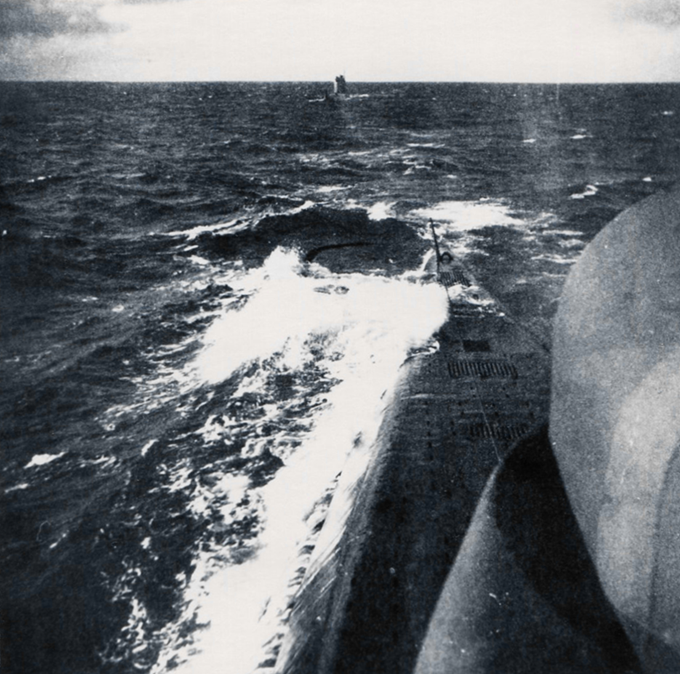April
Wreck of the last German submarine lost in World War II found
On 13 April 2018, the Sea War Museum in Thyborøn, Denmark, announced the discovery of the wreck of a German type XXI submarine. The museum carries out an ongoing search for shipwrecks in the North Sea and the Skagerrak, in which around 450 wrecks have been found, registered and mapped so far. Among them are three British and nine German submarines. In its search, the museum has now found the wreck of a U-boat of the mythical type XXI 10 nm north of Skagen.
At a depth of 123 m, the wreck with the bow sticks in the seabed up to the front edge of the tower at an angle of approximately 40°, so that the stern protrudes approx. 20 m. The wreck can only be U 3523, which was sunk in the Skagerrak by a British B-24 Liberator on May 6, 1945.

The inland-built sections of U 3523 were assembled at the F. Schichau shipyard in Gdansk from October to December 1944. After the launch on December 14, 1944 the final outfitting and finally on January 29, 1945 the commissioning by his 33-year-old commander OltzS. d. R. Willi Müller took place. This was followed by a hasty training, of which, however, there are no traditions. At the end of April, U 3523 probably left East Prussia with the destination of the Norwegian U-boat bases. On 4 May 1945, together with his sister boats U 3017 and U 3503 and the type IX C/40 boat U 534 they anchored at anchorage “O” off Helsingör. Despite Germany’s partial capitulation to the British 21st Army Group, the U-boats were still ordered to march on to Norway without further escort on the late evening of 4 May. Around 07:30 the next morning the four boats left their anchorage. They were to take the compulsory route 48 to the point “Schwarz” southwest of Gothenburg to march submerged from there to Norway.
At 13:35 west of Anholt Island the U-boat formation was attacked by two British B-24 Liberators. One, the aircraft “E” of the 547th Squadron, was shot down by U 534, the other, the aircraft “G” of the 86th Squadron finally sunk the submarine, while the three boats of type XXI – in violation of standing orders – could dive in time. Since then there have been no more signs of U 3523.

On May 6, 1945, the British Liberator G/87, which accounts for the sinking of the U 534, sighted the snorkel of a submerged U-boat heading west for Kristiansand. The aicraft started to attack with depth charges. This was documented by photos for later evaluation. These photos clearly show that the snorkel had separate pipes for supply and exhaust air, i.e. that of a type XXI or XXIII submarine. Since no other boat of these types recorded an attack that day, the attacked U-boat must have been U 3523. The crew of the Liberator observed floating oil and debris and therefore assumed the sinking of the U-boat. The total loss of U 3523 was the last loss of a U-boat by enemy action in World War II. It also shows that U-boats were by no means protected from deadly air raids during snorkelling.
By the high-resolution sonar images now published by the Danish Sea War Museum U 3523 does not appear to have been sunk by direct impact of depth charges, but rather as if it had swooped into the seabed at a relatively shallow angle at high speed.
Like a whole series of other submarines, among them U 534, which was wrapped in myths about fleeing prominent Nazis and transported treasures, U 3523 set off from Germany in April/May 1945 to the Norwegian bases from where the U-boat war was fought towards the end of the war. Like U 534, the more modern U 3523 may not have offered prominent Nazis a really good escape. It can also be assumed that there were no special valuables on board. Although the boat appears mainly intact, it should be practically impossible to lift, as half of it is in the mud. The remains of the 58-strong crew are probably still on board, which is why it is to be regarded as a war grave, the peace of which should not be disturbed.
Weblinks:
